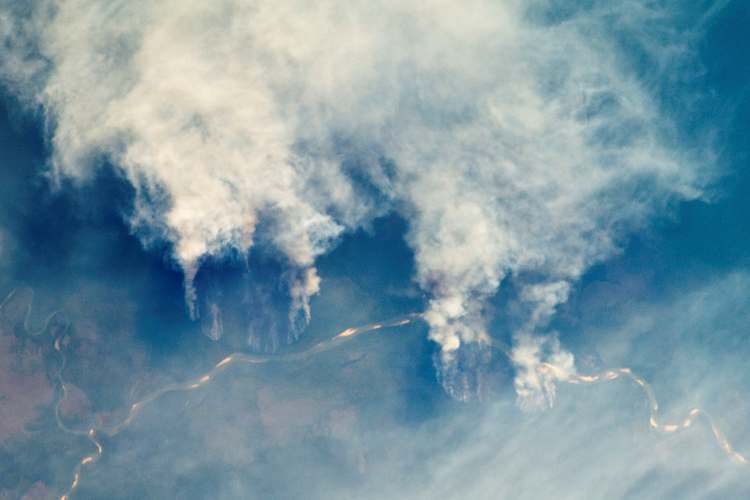
In the year 2024, the world set a record no one wished to break — an alarming surge in global tree cover loss, with fires devouring 6.7 million hectares of tropical primary forests. For the first time since satellite monitoring began, fire—not agriculture—was the leading cause of tropical deforestation. This is not merely an environmental statistic. It is a barometer of political failure and institutional complacency in the face of climate emergency.
The data released by the University of Maryland’s GLAD Lab, disseminated through the Global Forest Watch (GFW) platform, paints a dire picture: an 80% spike in tropical forest loss over the previous year, equivalent to an area the size of Panama. With each hectare lost, humanity inches closer towards irreversible biodiversity loss, higher carbon emissions, and extreme climate events.
READ I Nuclear power gets policy boost in India
How forest loss was measured
The Global Forest Watch report is not an exercise in academic cartography. The UMD tree cover loss data, covering forests with vegetation taller than five metres, differentiates between temporary and permanent loss — a nuance lost in many national statistics. For instance, while selective logging in plantations may not qualify as deforestation, the loss of tropical primary forest — mature, natural rainforest — is permanent, irreplaceable, and catastrophic.

This distinction also explains why UMD data often diverges from national estimates. Brazil’s PRODES system, for instance, only maps clear-cut deforestation over 6.25 hectares. UMD, in contrast, detects loss at a 0.09-hectare scale and includes smaller, often overlooked, forest disturbances. The result: UMD estimates a 13% rise in non-fire forest loss in Brazil, while PRODES claims a 31% drop in overall deforestation. Both are accurate in their own methodological lanes — but only one reflects the full ecological damage.
In Indonesia, the contrast is equally revealing. The SIMONTANA system reported a 61% year-on-year rise in deforestation in 2024. Yet the UMD data, after adjusting for patch size and observation period, showed a more modest decline in forest loss. In Bolivia, where the loss surged 200% over 2023, there is no ambiguity: fires, most of them human-induced, tore through 1.5 million hectares of irreplaceable tropical canopy.
Fire — the new engine of tropical forest loss
The year 2024 confirmed a disturbing new reality: tropical forests, once spared from frequent wildfires, are now burning with ferocity. In Latin America, a prolonged drought — intensified by El Niño and a heating planet — created tinderbox conditions. In Brazil alone, fires were responsible for two-thirds of forest loss, a sixfold increase from 2023.

Scientists are unequivocal: fires in the tropics do not occur naturally. They are human-induced, often illegally, to clear land for agriculture or pasture. The consequences, however, extend far beyond national borders. Global fire-related emissions touched 4.1 gigatonnes — more than quadruple the emissions from commercial aviation in 2023.
This is not merely ecological damage. It is a violation of intergenerational equity. “2024 was the worst year on record for fire-driven forest loss,” warned Prof. Peter Potapov of UMD. “If this trend continues, it could permanently transform natural areas and unleash carbon feedback loops we cannot control.”
India’s silent crisis in the northeast
India’s forest crisis receives far less attention than the Amazon, but its trajectory is no less troubling. In 2024, India lost 18,200 hectares of tropical primary forest — up from 17,700 the previous year. Over 93% of all tree cover loss occurred in natural forests, releasing an estimated 273 million tonnes of CO₂ equivalent.
Between 2001 and 2024, India lost 2.31 million hectares of tree cover — a 7.1% drop in forest extent. And while the country has added 1.78 million hectares of tree cover during the same period, this “greening” is misleading. Much of it is monoculture plantations or degraded forests, offering little ecological value.
The brunt of the loss is borne by the Northeast. Four states — Assam, Mizoram, Nagaland, and Manipur — accounted for 52% of total tree cover loss. This is not coincidental. These states are at the frontlines of development aggression: shifting agriculture, unchecked mining, road construction, and insurgency-related logging.
Yet the data does offer some cause for reflection. Despite the loss, India’s rate of deforestation has not accelerated dramatically compared to many tropical nations. Longstanding national afforestation programmes, legal restrictions on forest conversion, and community forestry practices in states like Himachal and Odisha have cushioned the blow. But the pressure is rising.
A glimmer of hope from Southeast Asia
One must also acknowledge progress where due. Indonesia, through persistent government and civil society efforts, saw an 11% reduction in primary forest loss in 2024. Malaysia exited the top 10 deforesters list. These gains stem from tighter fire controls, better land monitoring, and corporate accountability in palm oil supply chains. They offer a blueprint for other tropical countries — including India.
Indonesia’s Auriga Nusantara and MapBiomas initiatives show the power of citizen-led data verification and monitoring. By comparing UMD alerts with 5-meter satellite imagery, they achieve a high degree of accuracy and local ownership. India must move towards similar decentralised, publicly accessible monitoring systems that combine national data with independent validation.
2030 targets still achievable
The world has pledged to halt deforestation by 2030 under the Glasgow Leaders’ Declaration. But in 2024, forest loss jumped 80%. This means we must now reduce deforestation by at least 20% every year to stay on track. This is not a negotiating table; it is a moral imperative.
This is no longer just about saving trees. It is about saving ourselves. Forests are not a luxury — they are the lungs of the planet, the vaults of biodiversity, and the lifelines of rural and Indigenous communities. The figures released this year are not abstract trends but an indictment of our collective inaction. The pledges made at summits in Glasgow and Paris ring hollow when matched against scorched landscapes and displaced communities.
We do not need more declarations. We need enforcement, investment, and political courage. Forests are burning not just because of climate change, but because of a deficit of will. And if we fail to act now, the next data release won’t just measure what we’ve lost — it will tell us how little time we have left.
